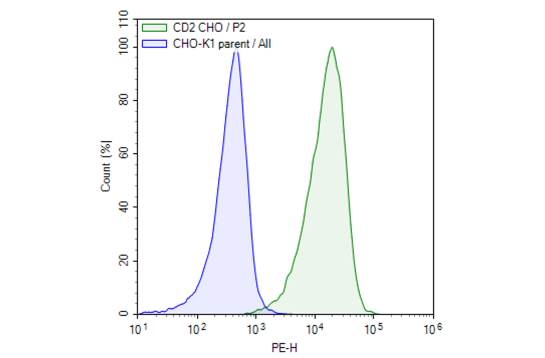CD2 CHO Cell Line
Recombinant clonal CHO-K1 stable cell line constitutively expressing full length human CD2 protein. The surface expression of CD2 in this cell line was validated by flow cytometry.
Purchase of this cell line is for research purposes only; commercial use requires a separate license. View the full terms and conditions.
Media Required for Cell Culture
| Name | Ordering Information |
| Thaw Medium 3 | BPS Bioscience #60186 |
| Growth Medium 3J | BPS Bioscience #79974 |
For best results, it is highly recommended to use these validated and optimized media from BPS Bioscience. Other preparations or formulations of media may result in suboptimal performance.
Media Required for Cell Culture
Thaw Medium 3 (BPS Bioscience #60186):
F-12K Medium (Kaighn's Modification of Ham's F-12 Medium) supplemented with 10% FBS, 1% Penicillin/Streptomycin
Growth Medium 3J (BPS Bioscience #79974):
F-12K Medium (Kaighn's Modification of Ham's F-12 Medium) supplemented with 10% FBS, 1% Penicillin/Streptomycin plus 5 μg/ml of Puromycin
The cell line has been screened to confirm the absence of Mycoplasma species.
CD2 (Cluster of differentiation 2, also known as T11, SRBC, or LFA-2) is a cell adhesion molecule and surface antigen found on the surface of all peripheral blood T-cells and natural killer (NK) cells. It is used as specific marker of T and NK cells. CD2 interacts with LFA3 (CD58) on antigen-presenting cells to optimize immune recognition. It also functions as a co-stimulator in T and NK cells. It is being investigated as a therapeutic target for the treatment of T cell lymphomas and leukemias.


